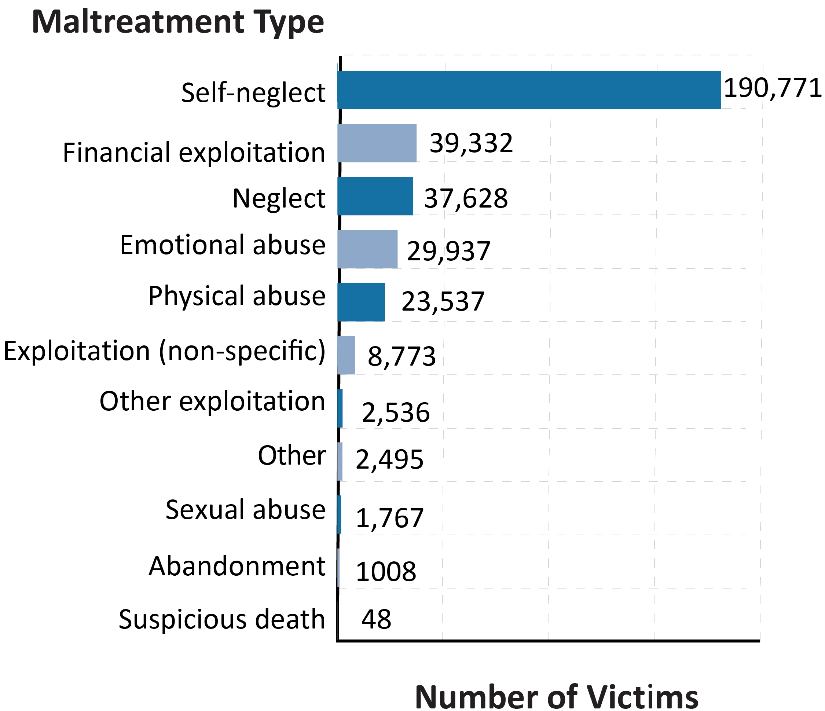This site is being reviewed and updated as needed to comply with President Trump's executive orders.
Adult Maltreatment Report 2022: Taking NAMRS to the Next Level
Leslie McGee, APS TARC
January 2024
The National Adult Maltreatment Reporting System (NAMRS) was developed to better understand the phenomena of adult maltreatment and identify system gaps for responding to maltreatment and preventing repeat maltreatment. With each passing year since the implementation of NAMRS in federal fiscal year (FFY) 2016, the completeness and utility of the data submitted to NAMRS has increased. This is due in part to federal funding from the Administration for Community Living (ACL) to support state data system upgrades, and ongoing technical assistance on data collection and submission provided to states through the Adult Protective Services Technical Assistance Resource Center (APS TARC).
NAMRS collects data annually on APS investigations of abuse, neglect, and exploitation (maltreatment) of older adults and adults with disabilities, as well as information on the administration of APS programs. Currently, the data collected is submitted by the APS programs in all 50 states, the District of Columbia, and every U.S. territory. Data submissions include non-identifying information about the clients, victims (i.e., individuals with a substantiated report of maltreatment), and perpetrators involved in those investigations. The APS TARC reviews, analyzes, and summarizes the data submissions for publication in the annual Adult Maltreatment Report (AMR). This blog discusses some of the key highlights from the Adult Maltreatment Report 2022, which will be available online soon.
What We Saw in the Data From 2022
Below are a few of the key data points regarding APS programs and the individuals they served as reported for FFY 2022 (October 1, 2021, to September 30, 2022):
- APS programs received 1,387,225 referrals of alleged adult maltreatment, of which 60.1% were accepted for investigation.
- There were 279,492 victims of adult maltreatment (i.e., individuals who were the subject of a substantiated investigation).
- Independent living difficulty was the most common disability identified for APS clients (27.3%) and the second most common disability for victims (21.7%). Ambulatory difficulty was the most common disability identified for victims (31.8%) and the second most common disability for clients (25.6%).
What We Have Seen in the Data Over Time
National APS data has been collected through NAMRS for seven years. This has provided an opportunity to look at trends and differences in some APS data elements as reported over time.
Each year, the APS TARC examines the trends in the numbers of reports, investigations, clients, and victims. Exhibit 1 (shown below) from the AMR 2022 report provides the six-year trend. The numbers of accepted reports, investigations, clients, and victims had consistently increased each year prior to FFY 2020, when there was a decrease in every category. After insignificant (<0.5%) decreases in the number of investigations and clients in FFY 2021, there were increases in the numbers for every category again in FFY 2022. Chapters in both the AMR 2020 and AMR 2021 discuss the impact that COVID-19 may have had on APS investigations.
Exhibit 1: Year-to-Year Summary Data

In 2022 as in previous years, there were more subjects of substantiated reports (referred to as victims) of self-neglect than for reports of all other maltreatment types combined. This is illustrated in Exhibit 2 below from AMR 2022.
Exhibit 2: Victims by Maltreatment Type

Where We Go from Here
In 2022, the National Adult Protective Services Association Research to Practice Interest Group began a new initiative on using administrative data for research to improve APS services, called the APS Administrative Data Initiative, or AADI. The response to an online forum hosted by the AADI group indicates an increasing interest in the use of APS administrative data to improve APS services and enhance the effectiveness of APS programs. ACL is committed to the continued improvement of NAMRS to support researchers and administrators in this effort.
The APS TARC has been working with programs for the past few years to improve their data submissions, particularly data completeness, as a means for improving data quality and its use for program management. In this regard, calendar year 2023 proved to be a year of transition for NAMRS. Below, two of the ongoing activities undertaken to improve NAMRS – data renewal and data completeness efforts, specifically – and their potential impact on APS are discussed in more detail.
Data Renewal
In spring of 2023, data collection through NAMRS was reauthorized by the Office of Management and Budget (OMB) under the Paperwork Reduction Act (PRA). This is the second reauthorization of NAMRS under PRA and is effective until 2026. ACL and the APS TARC obtained extensive stakeholder input on how to improve data collection and the overall system. Two important changes resulted from the reauthorization process.
First, ACL has expanded the use of data by making it more widely available and sharing state-specific data. ACL established a web page to both post public data and establish a process to request data. To date, only a few data requests have been received, although more extensive use of the data is expected as researchers become aware that the data is available, and notice is made about the data request process. In addition, the APS TARC will begin sharing state-specific data and conducting state-specific analyses in its public reports. The data will be shared with APS programs for state benchmarking and related program improvement efforts.
The second change from the data renewal process involved changes to the data itself, although these changes were not extensive. Several policy questions were added to the Agency Component, which provides an overview of the operational framework of the state’s APS program, to help provide a better understanding of APS programs and interpret the data. Additional code values were also added to the tools used for the collection of case data to collect information on new areas of interest. More detail about the changes to the NAMRS data components can be found in Chapter 5 of the report. The APS TARC will also provide further information and training later this year on these changes.
Data Completeness
The NAMRS system was built with some data elements ACL recognized most programs did not collect, but believed were important for understanding adult maltreatment. Few of the NAMRS elements are required; the goal was for APS programs to begin collecting the data elements over time.
In 2020, the APS TARC conducted a data completeness analysis for ACL to identify gaps in the completeness of data and reasons for the gaps. The analysis examined which data elements were provided and for data that was provided how much of it was “unknown” (i.e., missing data and records marked as the data being unknown). The notes to all the charts in AMR 2022 provide a good overview of the completeness of data. There are data elements in NAMRS that are not included in the report because of data incompleteness.
Improved data completeness continues to be a goal for ACL and the APS TARC. As states begin using state-specific data for program management, the impact of improving the NAMRS submissions, and by extension the quality of data available for them to use in assessing their programs, will be brought into clearer focus. In addition to making the data available to states for self-improvement, the APS TARC will revise the content and structure of the AMR to include state-specific data analyses.
For more discussion of the AMR 2022 data, implications of the changes resulting from the OMB renewal process, and plans for taking NAMRS to the next level, check out the APS TARC webinar Adult Maltreatment Report 2022 What We Know and What We Don’t. If you are not on the mailing list and did not receive the webinar notice, contact the APS TARC for more information.
To learn more about NAMRS, the APS TARC, to be notified when new reports are available, and for notifications about upcoming webinars and other learning opportunities, consider signing up for the APS TARC email list.
Thank you to the state APS programs that work diligently every year to compile and submit their NAMRS data, my amazing colleagues at the APS TARC, Karl Urban, Brian McBee, and Kyle Wagner, who spend many months organizing and analyzing the data for the report, and our team at the Learning and Resource Center who pull everything together.
Last Modified: 03/18/2024

